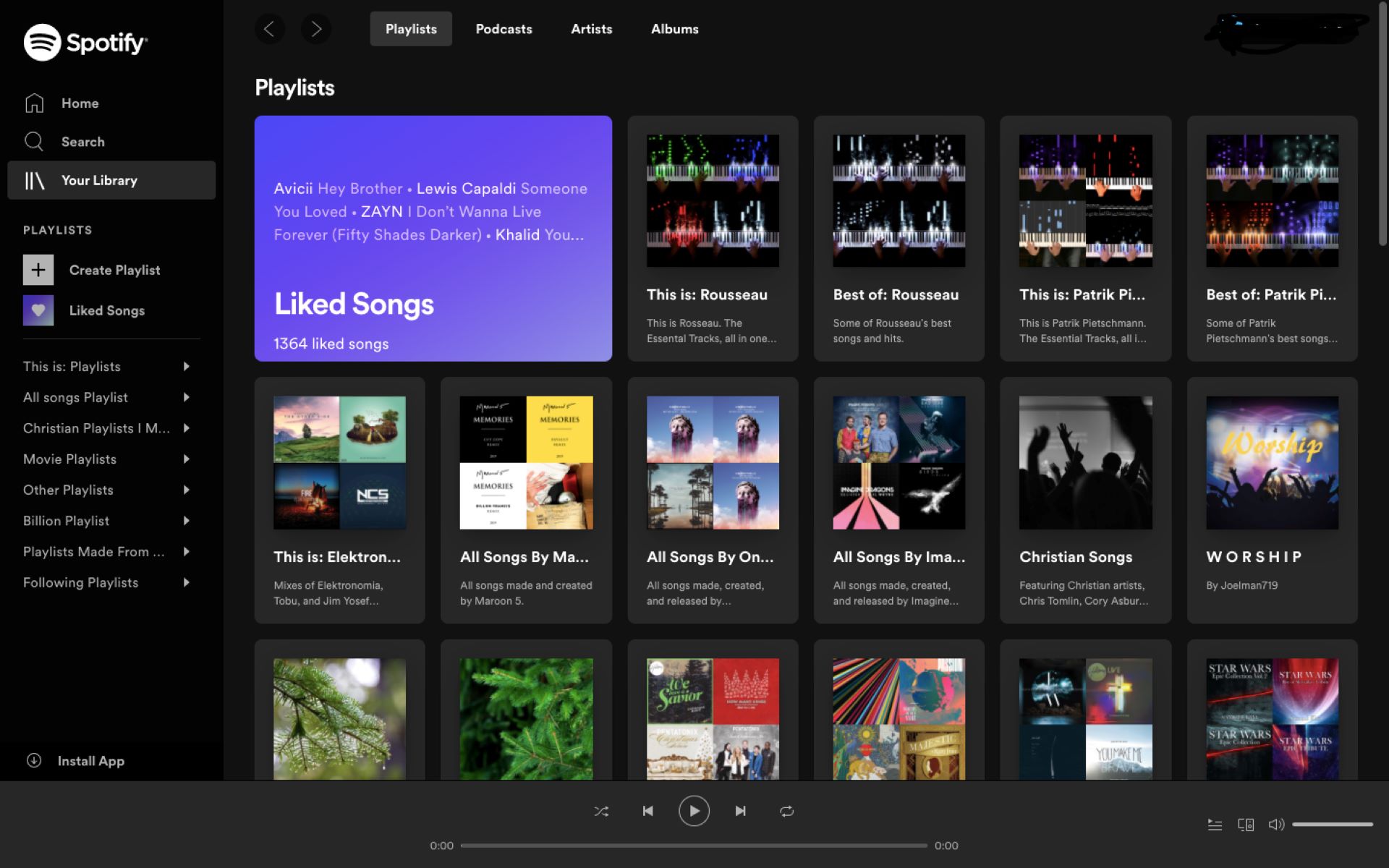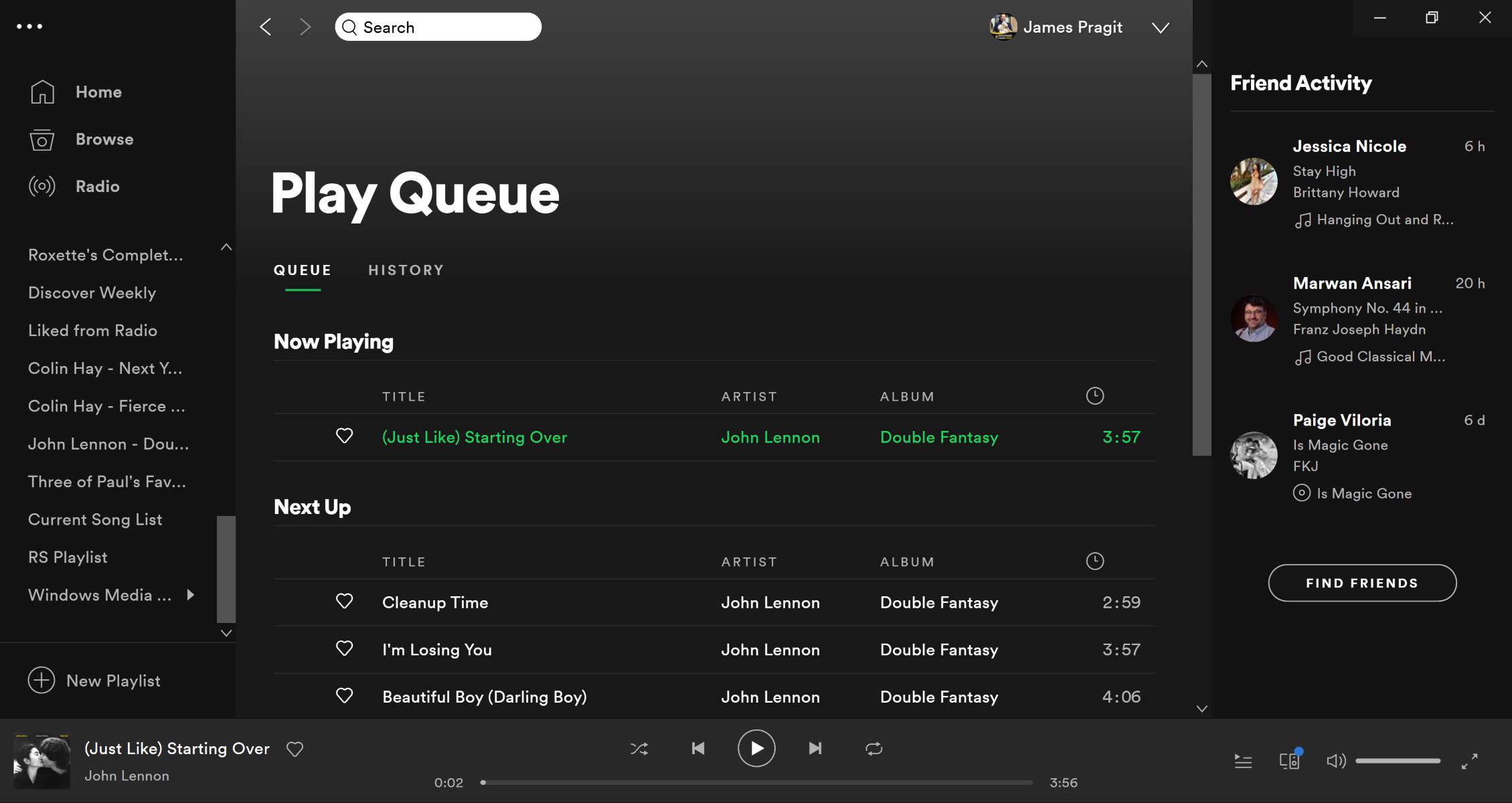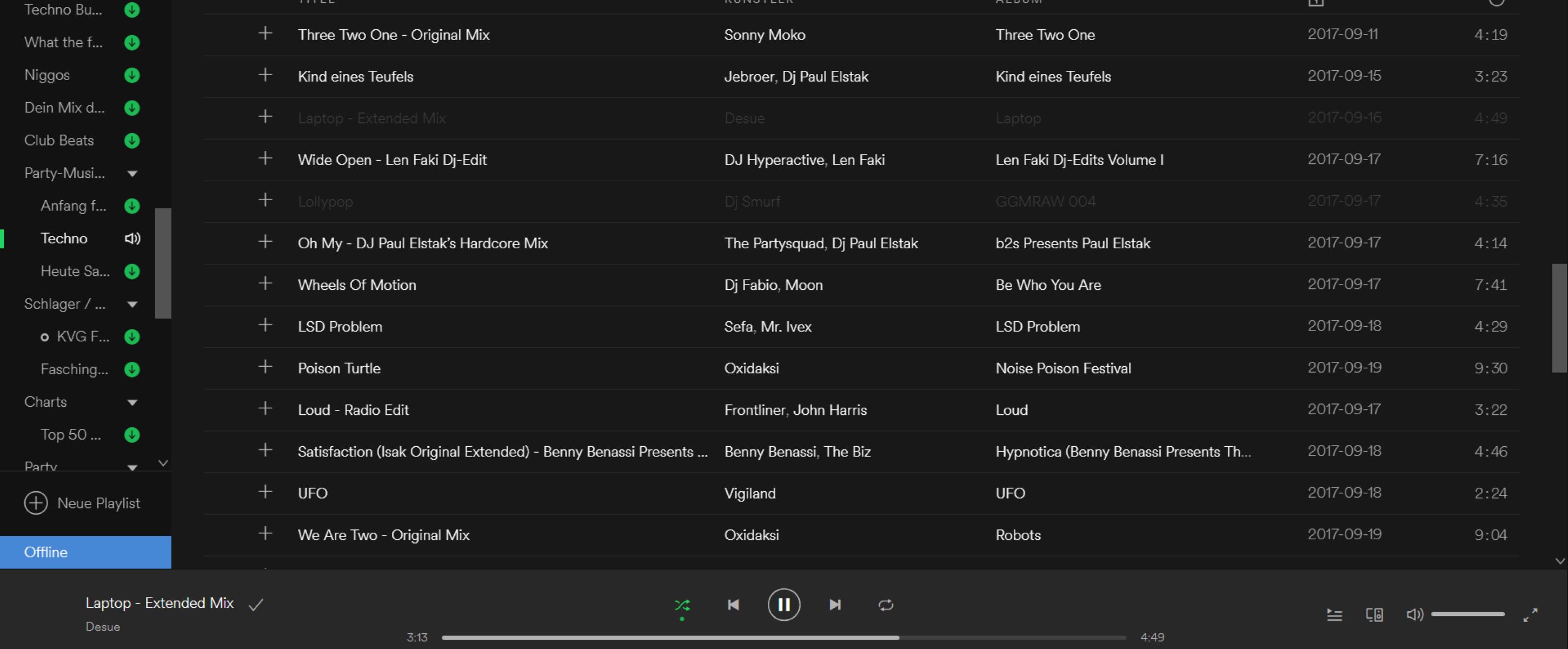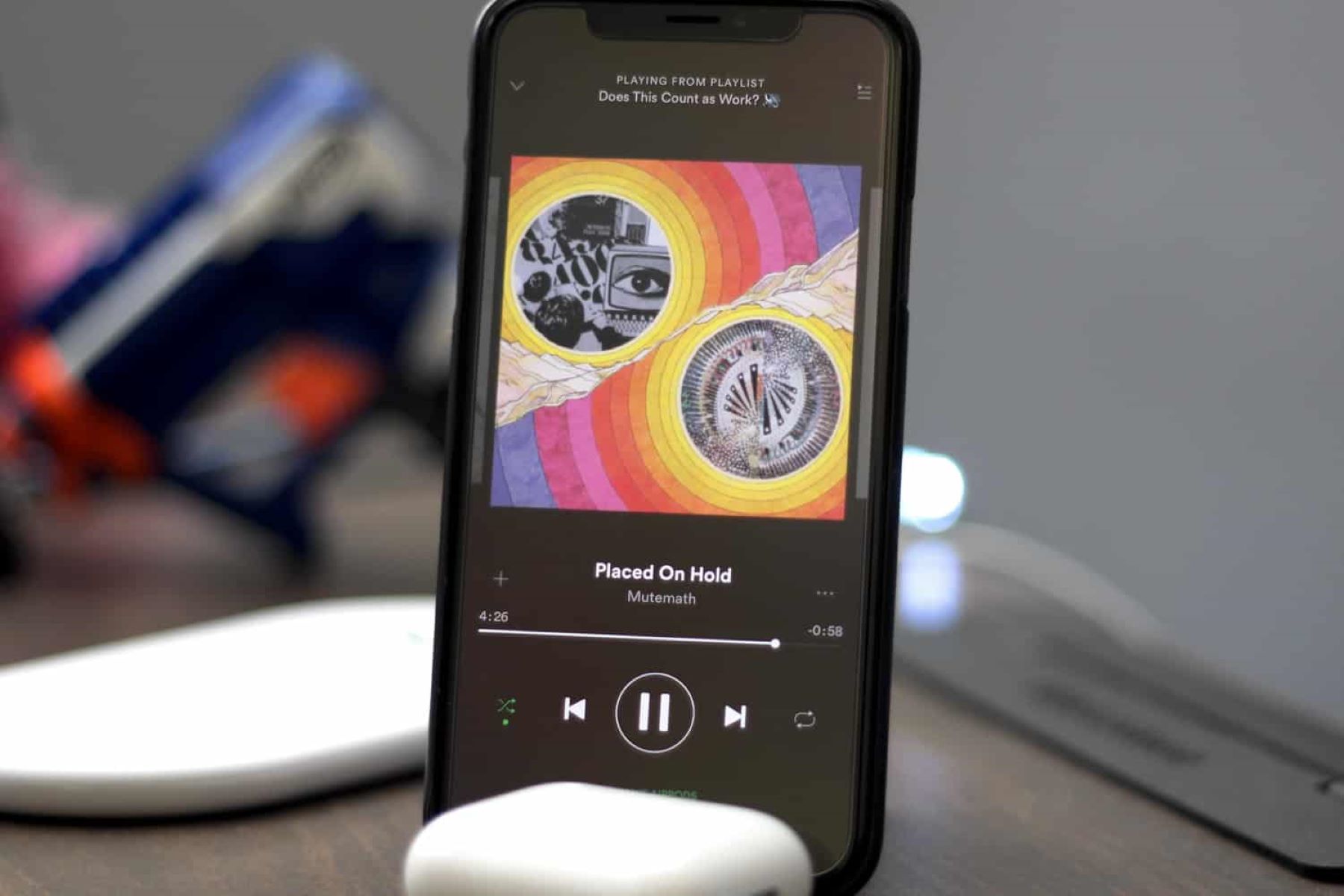Introduction
Spotify, the world’s leading music streaming service, has revolutionized the way we listen to music. With a vast library of songs at our fingertips, we can discover and enjoy new music from all corners of the world. But have you ever wondered just how many songs are available on Spotify?
In this article, we will delve into the fascinating world of Spotify’s music library and explore the incredible number of songs it has to offer. From the process of gathering music to the role of labels and artists in expanding the library, we will uncover the secrets behind Spotify’s extensive music collection.
Moreover, we will consider the implications of such a vast music library, including the endless choices it presents to users and the impact it has on the music industry. So, whether you’re a die-hard Spotify fan or simply curious about the sheer magnitude of its music collection, join us on this journey to uncover the wonders of Spotify’s song-filled kingdom.
Let’s dive in and explore just how many songs await us on Spotify.
The Number of Songs on Spotify
When it comes to the number of songs available on Spotify, the figures are truly staggering. As of the latest data, Spotify boasts a music library with over 70 million songs, making it the largest collection of music ever assembled in one place.
This vast range of songs covers virtually every genre and caters to diverse musical tastes, from popular hits to lesser-known indie gems. Whether you’re a fan of rock, hip-hop, classical, or anything in between, Spotify ensures that there is something for everyone.
What makes Spotify’s collection even more remarkable is the constant addition of new songs. With thousands of releases hitting the platform each day, the music library continues to expand rapidly, offering a never-ending stream of fresh content. This dynamic growth ensures that users always have access to the latest music and a multitude of options to choose from.
It’s important to note that the number of songs on Spotify is subject to change as new artists emerge and labels release their catalog over time. This means that the 70 million song count should be viewed as an approximate figure at any given moment, as it continues to grow and evolve.
So, whether you’re looking to explore familiar favorites or discover hidden gems, Spotify’s extensive library of over 70 million songs ensures that there is no shortage of musical treasure waiting to be unlocked.
How Spotify Gathers its Music Library
Building and maintaining a music library as vast as Spotify’s requires meticulous curation and collaboration with various stakeholders in the music industry. Let’s take a closer look at how Spotify gathers its extensive music collection.
One of the key ways Spotify acquires music is through licensing deals with record labels and distributors. These agreements allow Spotify to legally stream songs from a vast array of artists and genres. By partnering with major and independent labels, Spotify ensures that its library encompasses a wide range of musical content.
Besides licensing deals, Spotify also embraces a democratic approach – allowing independent artists and labels to directly upload their music to the platform through the Spotify for Artists program. This empowers artists to showcase their work directly to their fans and provides an opportunity for Spotify users to discover lesser-known talent.
In addition to collaborations with labels and artists, Spotify supplements its music library with user-generated content. Through collaborative playlists and the Discover Weekly feature, users can contribute to the platform by curating their own music collections and sharing them with the community.
Spotify also employs a dedicated team of music editors who continuously curate and update playlists. These editors have their pulse on the latest trends and work tirelessly to create playlists that cater to specific moods, genres, and occasions. Their expertise and passion for music play a crucial role in maintaining the quality and diversity of Spotify’s music library.
Furthermore, Spotify utilizes advanced algorithms and machine learning to analyze user listening habits and recommend personalized playlists and song suggestions. By combining user data with expert curation, Spotify ensures that its library is not only vast but also tailored to the preferences of each individual user.
All these efforts – partnerships with labels, direct uploads from artists, user-generated content, curated playlists, and personalized recommendations – contribute to the comprehensive and ever-expanding music library that Spotify has become synonymous with.
The Growth of Spotify’s Music Library Over the Years
Since its inception in 2008, Spotify has experienced remarkable growth, both in terms of its user base and its music library. With a mission to provide access to an unparalleled range of songs, Spotify has consistently expanded its music collection over the years.
When Spotify first launched, it featured a relatively modest music library, with around 15 million songs. However, as the platform gained popularity and secured licensing agreements with major record labels, the number of songs available to users began to skyrocket.
By 2013, Spotify’s music library had grown to an impressive 20 million songs. This expansion was driven by a combination of label partnerships, independent artist uploads, and user-generated content, which allowed Spotify to cater to a wide range of musical tastes and preferences.
As the years went by, Spotify’s relentless pursuit of musical variety saw its library reach the 50 million mark in 2016. This milestone was a testament to the platform’s commitment to offering users an unrivaled selection of songs from countless genres and artists around the world.
In 2021, Spotify’s music library surpassed 70 million songs. This exponential growth can be attributed to a multitude of factors, including new deals with major labels, the rise of independent artists, and advances in technology that streamline the music upload process.
Furthermore, Spotify’s efforts to secure exclusive partnerships with artists, labels, and producers have contributed to the expansion of its library. These exclusive releases allow Spotify users to access highly anticipated albums and singles, further enhancing the overall experience on the platform.
Looking ahead, it is reasonable to expect that Spotify’s music library will continue to expand in the coming years. As the platform solidifies its position as the go-to destination for music streaming, more artists and labels are likely to collaborate with Spotify, further enriching its already vast collection of songs.
Overall, the growth of Spotify’s music library reflects its dedication to offering users an unparalleled selection of music and its ongoing commitment to fostering a diverse and inclusive musical community.
The Role of Labels and Artists in Spotify’s Music Library
Labels and artists play a crucial role in shaping Spotify’s vast music library. Their contributions, collaborations, and decisions directly impact the content available to users on the platform. Let’s delve into the significance of labels and artists in Spotify’s music ecosystem.
Record labels, both major and independent, form the backbone of Spotify’s music library. These labels sign agreements with Spotify, granting the platform the rights to stream their artists’ songs. Through these partnerships, Spotify gains access to a wide variety of music spanning different genres and styles.
Labels undertake the responsibility of promoting and distributing their artists’ music, ensuring that it reaches the widest possible audience. They work closely with Spotify to curate playlists, highlight new releases, and promote emerging talent. This collaboration helps Spotify maintain a dynamic and ever-evolving music library that caters to the diverse tastes of its users.
On the other hand, artists themselves hold significant agency in shaping Spotify’s music catalog. Many artists choose to directly upload their music to Spotify through programs like Spotify for Artists. This enables musicians, especially independent ones, to have direct control over their music’s availability on the platform.
By providing a user-friendly interface for uploading music, Spotify empowers artists to share their work directly with the world, bypassing traditional label structures. This approach fosters a more inclusive and diverse music library, with a higher likelihood of discovering emerging artists and niche genres.
Moreover, artists and labels have the ability to strike exclusive deals with Spotify, granting the platform early access or exclusive rights to release their music. These exclusive partnerships create buzz and excitement among fans, who eagerly flock to Spotify to enjoy these limited-release tracks or albums.
In some cases, artists have even utilized Spotify as a platform for experimentation. They may release special edition tracks, alternate versions, or live recordings that are not available on traditional album releases.
The role of labels and artists extends beyond the initial inclusion of songs in Spotify’s library. They also actively engage with the platform’s features, such as collaborative playlists and artist-curated content. By participating in these activities, they contribute to the overall experience and interactivity of the platform.
Overall, the collaboration between labels, artists, and Spotify is instrumental in creating a diverse and extensive music library. Their collective efforts ensure that Spotify’s users have access to a wide array of music, celebrating both established favorites and emerging talents in the ever-changing musical landscape.
Discovering New Music on Spotify
One of the most exciting aspects of using Spotify is the ability to explore and discover new music. The platform offers a range of features and tools that make it easy for users to stumble upon fresh tracks and emerging artists. Let’s take a closer look at how Spotify helps us discover new music.
Spotify’s algorithmic recommendation system is one of its standout features. Using sophisticated machine learning techniques, Spotify analyzes user listening habits, playlists, and preferences to generate personalized recommendations. Whether it’s the “Discover Weekly” playlist, “Release Radar,” or the aptly named “Daily Mixes,” these curated playlists introduce users to a variety of new songs and artists that align with their musical tastes.
Curated playlists are another effective way to discover new music on Spotify. With thousands of playlists covering various genres, moods, and themes, Spotify’s team of expert music editors curate collections that cater to different tastes. These playlists gather tracks from both well-known and up-and-coming artists, exposing users to a diverse range of music.
In addition to algorithmic recommendations and curated playlists, Spotify fosters a thriving community of music enthusiasts. Users can follow their friends, public figures, or influential tastemakers on the platform to see what they’re listening to and discover music through their recommendations. This social aspect of Spotify encourages sharing and creates a discovery ecosystem driven by user interactions.
Moreover, Spotify features a variety of genre and mood-based radio stations. These stations create never-ending playlists based on a specific artist, song, or genre, providing users with an endless stream of similar tracks to explore. This takes the hassle out of manually searching for new music and allows users to sit back and let Spotify curate a personalized radio experience.
Spotify’s “Related Artists” feature is also a powerful tool for music discovery. By exploring an artist’s profile, users can find similar or related artists who share a comparable sound or style. This enables listeners to expand their musical horizons and dive deeper into particular genres or sub-genres.
Lastly, Spotify’s integration with social media platforms allows users to discover music through viral trends and sharing. Popular songs and playlists frequently circulate on platforms like Twitter, Instagram, and TikTok, driving users to search for and listen to these trending tracks on Spotify.
With its recommendation algorithms, curated playlists, social features, radio stations, and integration with social media, Spotify provides users with an immersive and effortless way to discover new music. Whether you’re a seasoned music enthusiast or someone looking to expand their musical horizons, Spotify offers a world of undiscovered gems waiting to be explored.
How Many Songs Can You Stream on Spotify?
As a Spotify user, you may be wondering how many songs you can stream on the platform. The good news is that Spotify offers an extensive music library, providing access to a vast number of songs across various genres and languages.
Spotify allows users to stream millions of songs, with the exact number varying due to licensing agreements, artist availability, and regional restrictions. As of the latest update, Spotify’s music library boasts over 70 million songs, ensuring there is something to suit every musical taste.
With such a tremendous selection at your fingertips, you have the opportunity to explore music from different eras, cultures, and genres without limitations. Whether you’re into chart-topping hits, underground indie tracks, or niche genres, Spotify’s expansive library ensures that you have an abundance of listening options.
It’s important to note that while Spotify offers an extensive collection of songs, there may be certain tracks or albums that are not available due to licensing restrictions or artist preferences. Additionally, the availability of songs may vary based on your geographical location due to licensing agreements differing between countries.
Spotify’s focus on catering to diverse musical tastes means that you can access an extensive range of songs beyond the mainstream hits. The platform’s dedication to discovery also means you can uncover lesser-known artists or genres that align with your musical preferences.
Furthermore, Spotify’s offline listening feature allows you to download songs and playlists, providing a seamless listening experience even without an internet connection. This feature gives you the flexibility to enjoy your favorite tunes whenever and wherever you want.
It’s worth noting that the number of songs you can stream on Spotify is not unlimited. While the exact number of songs you can stream may vary depending on your subscription plan and the region you are in, Spotify sets limitations to prevent abuse and ensure a fair experience for all users.
So, whether you’re in the mood for discovering new artists, revisiting old favorites, or diving into a specific genre, Spotify’s extensive music library offers an extraordinary number of songs to stream and enjoy at your fingertips.
The Implications of Spotify’s Vast Music Library
The vast music library offered by Spotify has significant implications for both users and the music industry as a whole. Let’s explore some of the key implications of Spotify’s extensive collection of songs.
For users, Spotify’s vast music library provides an unparalleled level of choice and variety. With millions of songs available, users can explore different genres, discover new artists, and create personalized playlists that cater to their unique tastes. This abundance of options allows for a highly personalized listening experience, where users can curate their own musical journey.
In addition, Spotify’s music library enables users to access an extensive catalog of music from around the world. This globalization of music allows for the discovery and appreciation of different cultures and musical traditions, fostering a more interconnected and inclusive music community.
The availability of such an extensive music library also has significant implications for artists and the music industry. Spotify offers a platform for both established and emerging artists to reach a massive audience and gain exposure. It democratizes the distribution of music, giving independent artists an opportunity to be discovered alongside well-known artists signed to major labels.
Spotify’s extensive music library has also revolutionized the way artists promote their work. With curated playlists, algorithmic recommendations, and social sharing capabilities, artists have more avenues than ever to showcase their music to a wider audience. This has transformed traditional marketing strategies and created new opportunities for artists to build a fan base and connect with listeners directly.
Furthermore, the global reach of Spotify’s music library has changed the dynamics of the music industry. Artists can now have a worldwide reach without the need for extensive physical distribution. This accessibility has expanded opportunities for collaboration and cross-cultural musical influences, leading to a more diverse and innovative music landscape.
However, the extensive music library of Spotify also raises important considerations regarding fair compensation for artists. While Spotify pays royalties to rights holders based on the number of streams, the revenue distribution model has been a subject of debate. Some argue that the current streaming model does not adequately compensate artists, particularly smaller and independent ones.
Overall, the implications of Spotify’s vast music library are far-reaching. From offering users an unprecedented level of choice and discovery to transforming the dynamics of the music industry, Spotify’s extensive collection of songs has reshaped the way we consume, create, and appreciate music.
Conclusion
Spotify’s music library, with its vast collection of over 70 million songs, has revolutionized the way we discover, listen to, and appreciate music. The number of songs available on the platform is staggering, providing users with an unparalleled range of options to explore and enjoy.
Through partnerships with labels, direct uploads from artists, user-generated content, and curated playlists, Spotify ensures that its library caters to diverse musical tastes and offers something for everyone. The growth of Spotify’s library over the years reflects its commitment to providing a comprehensive and ever-expanding collection of music.
Spotify’s extensive music library has significant implications for users, allowing them to discover new artists, genres, and cultures from all over the world. The platform’s recommendation algorithms, curated playlists, and social features make it easy for users to navigate this vast library and find music that resonates with their individual preferences.
For artists, Spotify’s music library opens doors to a global audience and provides opportunities for exposure, collaboration, and fan engagement. It disrupts traditional distribution models and empowers artists to release their music directly to the platform, fostering a more inclusive and diverse music landscape.
While Spotify’s vast library offers incredible choice and variety, it also raises questions about fair compensation for artists and the sustainability of the music industry. These considerations highlight the importance of ongoing discussions and efforts to ensure that artists are fairly rewarded for their work in the digital streaming era.
All in all, Spotify’s extensive music library has transformed the way we consume and experience music. It has empowered users to explore new sounds, empowered artists to reach broader audiences, and played a pivotal role in shaping the modern music industry. As Spotify continues to evolve and expand its library, it promises to be a treasure trove of musical discovery for years to come.
























